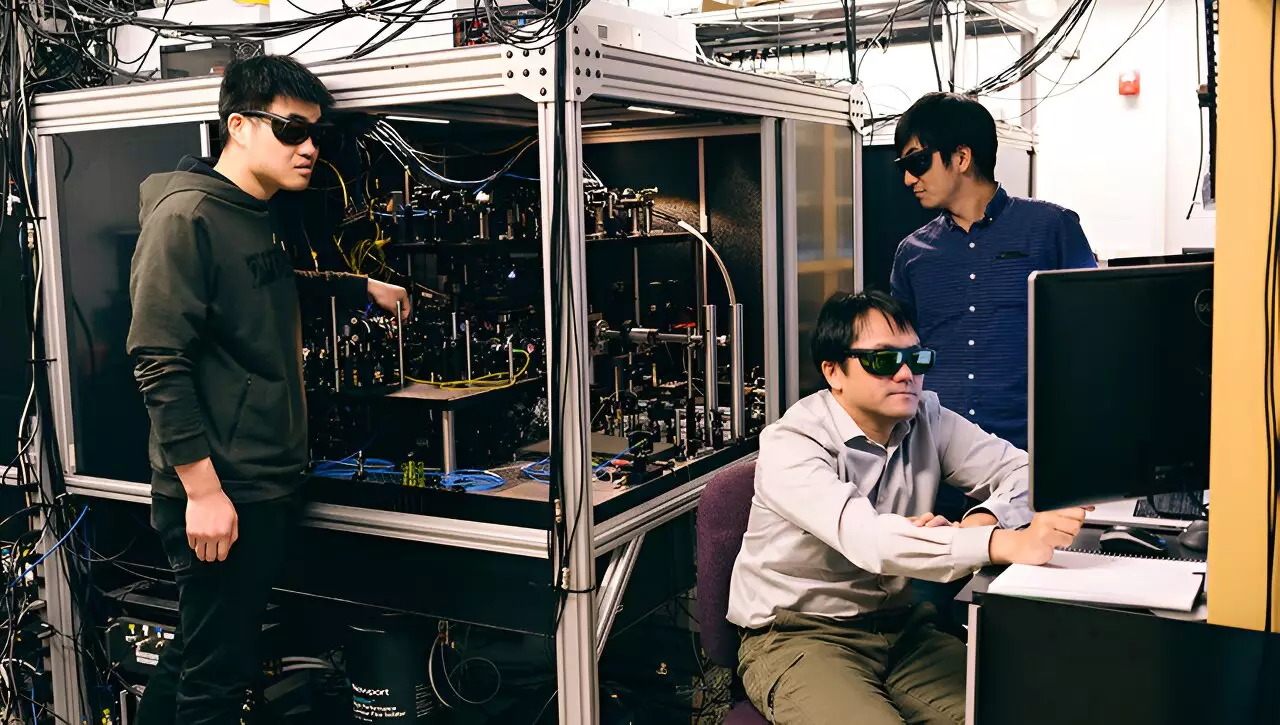Researchers at Purdue University have achieved a groundbreaking feat by trapping alkali atoms, specifically cesium, on an integrated photonic circuit. This circuit behaves similarly to a transistor for photons, marking a significant advancement in the realm of quantum networking. The team, led by Chen-Lung Hung, has paved the way for the development of a quantum network using cold-atom integrated nanophotonic circuits.
One of the key highlights of this research is the creation of an atom-coupled microring resonator that acts as a “transistor” for photons. By trapping atoms on this integrated circuit, the team can effectively control the flow of light through the circuit. Photons can either transmit through the circuit or be entirely blocked based on the state of the atoms. This gate function becomes more efficient as the atoms interact more strongly with the photons.
The team at Purdue University utilized lasers to cool and tightly trap atoms on the nanophotonic circuit, setting the stage for innovative quantum networking capabilities. With the help of state-of-the-art nanofabrication instruments, the team was able to pattern the photonic waveguide in a circular shape, creating the microring resonator for precise interaction with the trapped atoms.
By trapping up to 70 atoms on the integrated photonic chip, the researchers demonstrated the collective coupling of atoms to photons, enabling the efficient gating of light transmission. This collective interaction is made possible by the synchronization of atoms, leading to enhanced phase coherence and stronger interactions with light. This unique system allows for the exploration of new collective effects and opens up avenues for further research in quantum networking.
Future Prospects and Research Directions
The successful demonstration of atoms being cooled and trapped on a circuit has set the stage for a bright future in quantum networking research. The team envisions various promising next steps, including organizing trapped atoms in an array along the photonic waveguide to achieve selective radiance for improved photon storage. Additionally, the team aims to explore new quantum states of matter on integrated photonic circuits for the study of few- and many-body physics with atom-photon interactions.
The pioneering research conducted at Purdue University offers a glimpse into the immense potential of cold-atom integrated nanophotonic circuits in revolutionizing quantum networking. By harnessing the unique properties of cold atoms and photon interactions, the team has laid the foundation for future advancements in distributed quantum computing, collective light-matter interactions, and quantum degenerate trapped gases. This research opens up exciting possibilities for the development of quantum networks based on cutting-edge technologies and innovative approaches in the field of quantum communication.


Leave a Reply